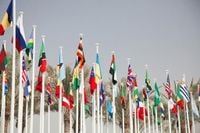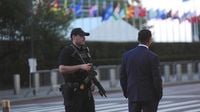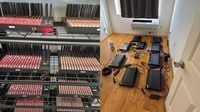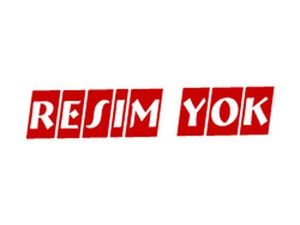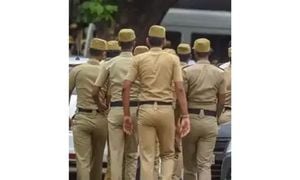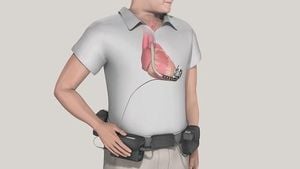As the world’s political elite descended on New York City for the annual United Nations General Assembly, federal authorities say they quietly dismantled what may be one of the most sweeping and sophisticated threats to the city’s invisible lifeline: its telecommunications infrastructure. On September 23, 2025, the U.S. Secret Service announced the takedown of a clandestine network of electronic devices, servers, and SIM cards capable of crippling cell towers, jamming emergency calls, and unleashing a torrent of anonymous, encrypted digital attacks.
The operation, timed just as President Donald Trump and more than 150 heads of state arrived in Manhattan for the high-stakes week of global diplomacy, unfolded within a 35-mile radius of the U.N. headquarters. According to the New York Times and Gothamist, the Secret Service and its partners discovered more than 300 SIM servers and over 100,000 active SIM cards, with even more waiting to be deployed—evidence, officials say, of a plot that could have doubled or tripled in scale.
“The potential for disruption to our country’s telecommunications posed by this network of devices cannot be overstated,” declared Secret Service Director Sean Curran, as quoted by Gothamist and News Arena Network. He emphasized, “The U.S. Secret Service’s protective mission is all about prevention, and this investigation makes it clear to potential bad actors that imminent threats to our protectees will be immediately investigated, tracked down and dismantled.”
The cache of equipment was staggering. Rows of servers and shelves stacked high with SIM cards—more than 100,000 already active—were found across multiple sites. “It can’t be understated what this system is capable of doing,” said Matt McCool, the special agent in charge of the Secret Service’s New York field office, in remarks reported by the Daily Mail. “It can take down cell towers, so then no longer can people communicate, right? You can’t text message, you can’t use your cell phone. And if you coupled that with some sort of other event associated with UNGA, you know, use your imagination there, it could be catastrophic to the city.”
Authorities explained that the servers functioned like banks of mock cellphones, able to generate mass calls and texts—up to 30 million messages per minute, according to People Magazine—and overwhelm local networks. In fact, officials estimated the system could send messages to the entire country in just 12 minutes, a technical feat that underscores the potential for chaos if the system had been weaponized during a major event like the U.N. General Assembly. The implications are chilling: not only could everyday communication be knocked out, but emergency services such as 911 could be jammed, severely hampering the city’s ability to respond to crises.
While the discovery was alarming, officials were quick to reassure the public. No direct plot to disrupt the U.N. General Assembly was uncovered, and there were no known credible threats to New York City at the time, according to the Secret Service and NYPD. Still, the timing and scale of the operation left little doubt about its potential impact. “If you coupled that with some sort of other event associated with UNGA… it could be catastrophic to the city,” McCool reiterated.
The investigation is ongoing and involves a constellation of agencies, including the New York Police Department, the Justice Department, Homeland Security Investigations, and the Office of the Director of National Intelligence. International partners are also involved, reflecting the global nature of the threat. The operation itself was led by the Secret Service’s Advanced Threat Interdiction Unit, a specialized division created to counter high-level risks to national security.
But who was behind this shadowy network? Forensic analysis is still in its early stages, with agents combing through the mountain of data—calls, texts, and encrypted messages—generated by the seized SIM cards. Preliminary findings, reported by Gothamist and News Arena Network, suggest that the network enabled communications between nation-state threat actors and individuals already known to federal law enforcement. Cybersecurity experts cited by the New York Times speculated that only a handful of countries—namely Russia, China, or Israel—could pull off such a sophisticated operation, though authorities have not disclosed any concrete links to specific governments or criminal groups.
“My instinct is this is espionage,” Anthony J. Ferrante, a former White House and FBI cybersecurity expert, told the New York Times. James A. Lewis, a cybersecurity researcher at the Center for European Policy Analysis, agreed that the technical complexity and scale pointed toward nation-state involvement, rather than mere criminal activity.
Adding a further twist, authorities uncovered more than just telecom equipment. As reported by People Magazine, the sweep also netted illegal firearms, computers, mobile devices, and 80 grams of cocaine—a haul that suggests a nexus between cyber threats and traditional organized crime. The operation, officials said, appeared to be a “well-funded, highly organized enterprise,” costing millions of dollars in hardware and SIM cards alone.
Investigators believe the system could have been used for a range of malicious activities: from disabling cell towers and launching denial-of-service attacks to enabling anonymous, encrypted communications between criminal cartels, terrorist groups, and foreign state actors. The servers’ ability to mask these communications made it especially dangerous, as it could facilitate coordination of illicit activities while evading law enforcement surveillance.
For now, no arrests have been announced, and authorities remain tight-lipped about the investigation’s next steps. “We need to do forensics on 100,000 cell phones, essentially all the phone calls, all the text messages, anything to do with communications, see where those numbers end up,” McCool explained, noting the sheer scale of the task ahead. The possibility that similar networks may exist elsewhere in the United States cannot be ruled out. “It’d be unwise to think that there’s not other networks out there being made in other cities in the United States,” McCool warned.
The timing of the operation—on the eve of President Trump’s address to the U.N. and amid heightened security due to global conflicts like the ongoing Israeli strikes in Gaza—underscored the vulnerability of modern urban centers to invisible, high-tech threats. In the aftermath of the September 11 attacks and the Boston Marathon bombing, New York’s cellular networks collapsed under strain, but officials say this plot could have forced a shutdown at a time and place of the perpetrators’ choosing.
As world leaders convened to debate the world’s most pressing issues, the Secret Service and its partners worked behind the scenes to ensure that the city’s most basic form of connection—its ability to communicate—remained intact. The episode serves as a sobering reminder that in an age of digital warfare, the front lines are often hidden in plain sight, and the stakes can be nothing less than the heartbeat of a city.
